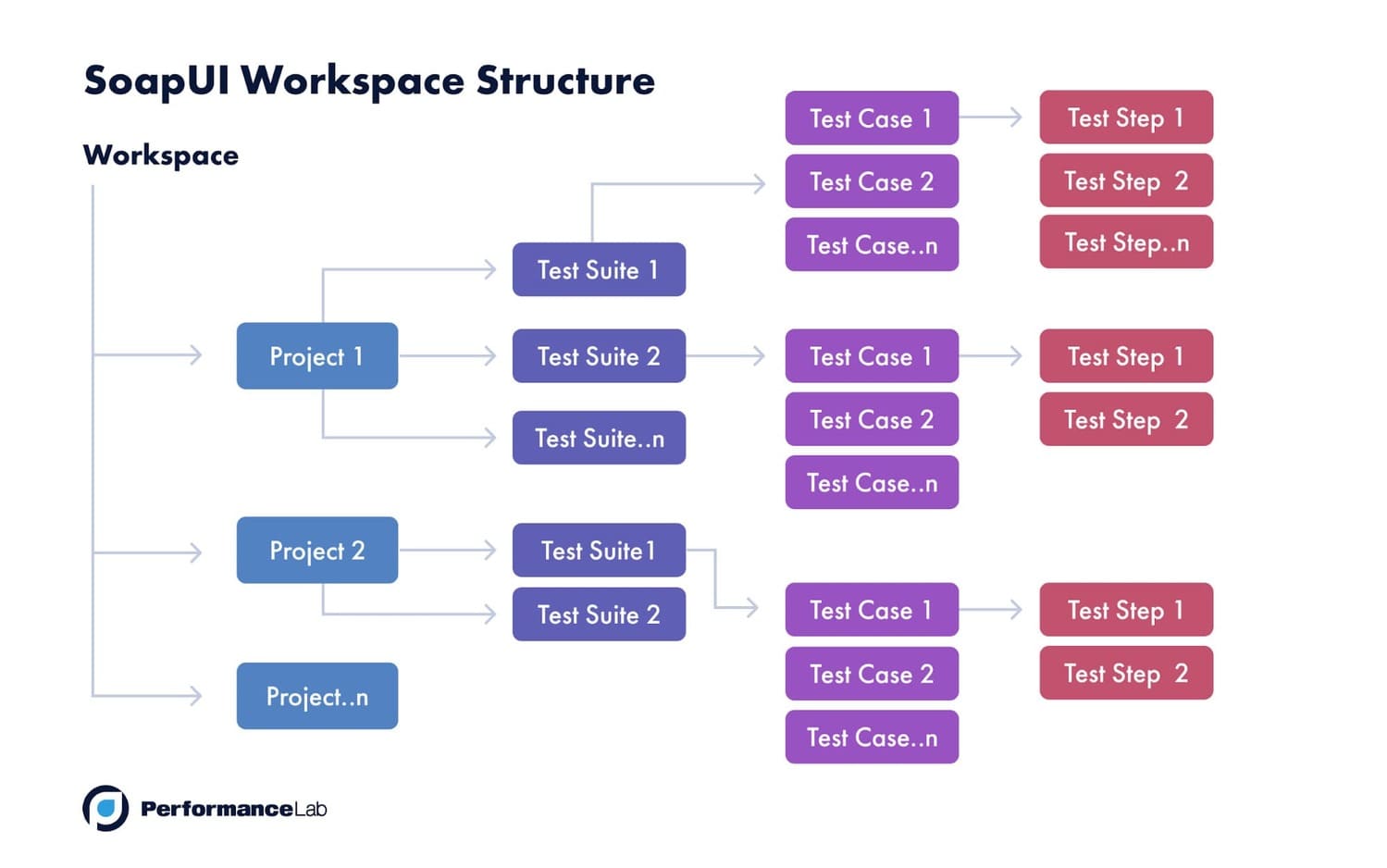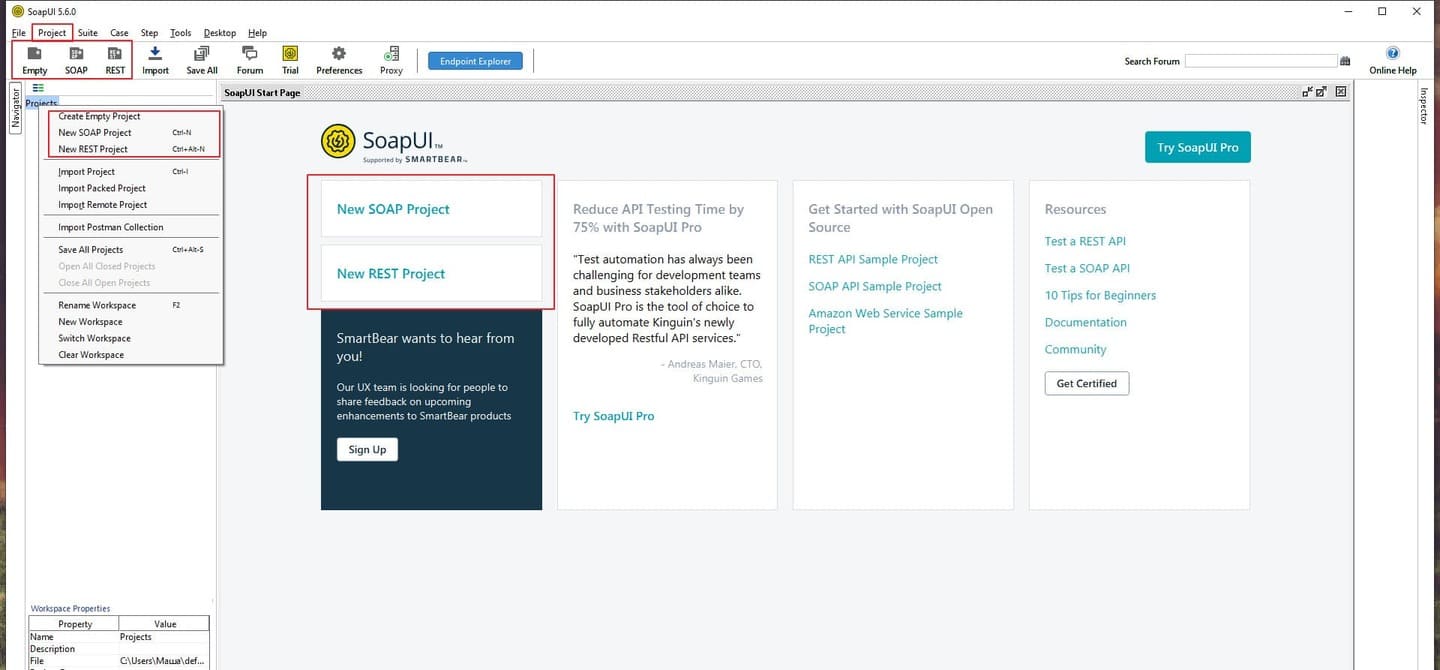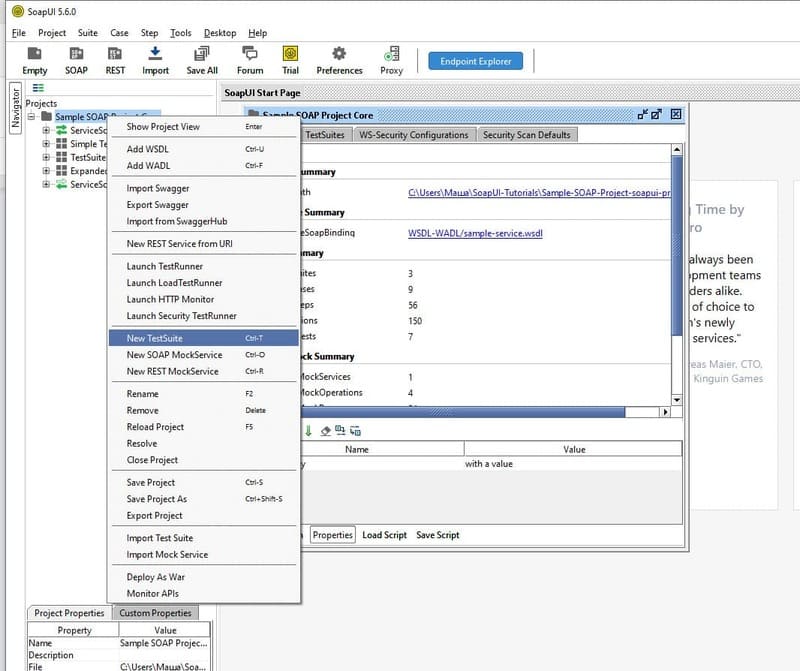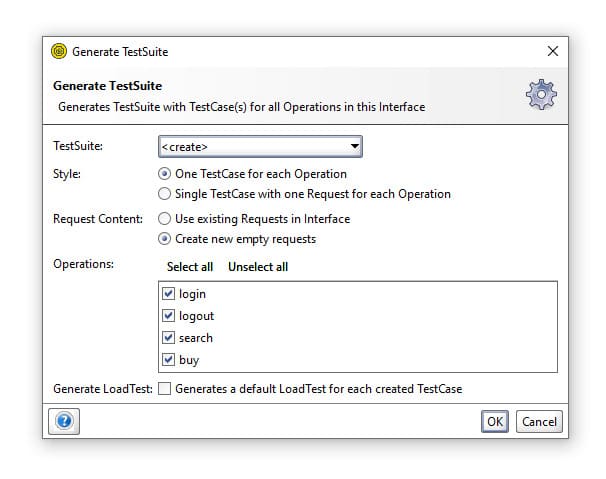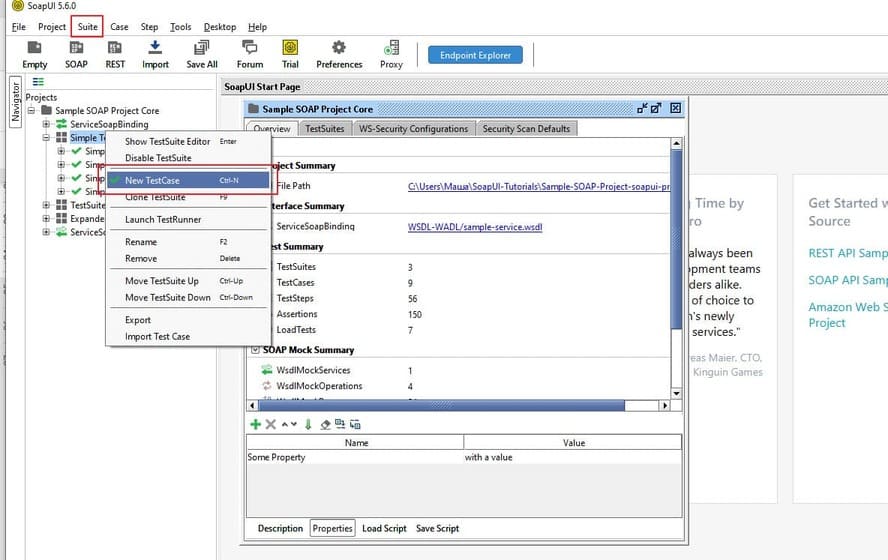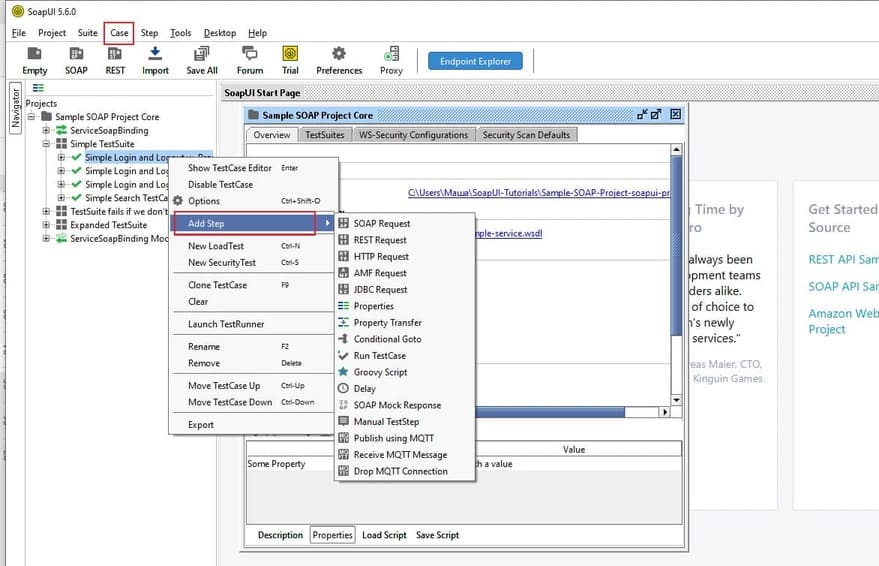SoapUI Tutorial: a Detailed Guide on How to Create Project, Test Suite, TestCase and TestStep
Web and API testing is an integral part of website testing. However, without a comprehensive software testing tool, it’s difficult to find hidden errors inside the software. Open-source tools like SoapUI provide us the perfect set of features for functional testing and non-functional testing. This is why it is widely used for Web Services testing. You can also read our comparison with other popular tool in PostMan vs SOAP UI post.
For proper testing, we must organize all our tests in a proper format. Without it, software test automation tools cannot work with the desired functionality. For this reason, SoapUI provides a collection of standard guidelines that help us create test cases in a defined hierarchy.
In this article, we will provide a detailed guide on how to create Project, Test Suite, and TestCase in SoapUI.
Table of Contents
- Understanding the SOAP Protocol
- Structure of Test Cases in SoapUI
- Projects in SoapUI
- TestSuite in SoapUI
- Creating a TestSuite in SoapUI
- TestCase in SoapUI
- Benefits of Using SoapUI
- Conclusion
Understanding SOAP
If you want to use SoapUI effectively, you have to understand the basics of the SOAP. SOAP (Simple Object Access Protocol) is a platform-independent XML-based protocol that enables the communication between applications written in different programming languages. For example, it makes it possible for a system developed in .NET to exchange messages with a system created in Java.
SOAP messages are encoded in XML and consist of <Envelope> element with two child elements: <Header> and <Body>. <Body> element also contains <Fault> subelement. These messages are used both for requests and responses. And one of the most used transports for SOAP messages is HTTP.
SOAP is one of the protocols supported by SoapUI (along with REST and JMS).
Structure of Test Cases in SoapUI
SoapUI follows a three-tier hierarchy to create test cases. TestStep is at the lower level of the hierarchy and is used to verify a single action. Several TestSteps are grouped in TestCases, and TestCases are grouped in TestSuite.
Multiple TestSuites are organized in Projects, and several Projects can be available through a single Workspace. So, to run web service testing with SoapUI, we first enter Workspace and create Project; create TestSuite; develop test cases for individual scenarios, and then outline TestSteps for our test cases.
Projects in SoapUI
Project is a set of all your TestSuites, TestCases and TestSteps you need to test for one product. You can create a SOAP or REST project or choose an empty one.
There are multiple ways to create a new project:
Also, it is possible to import projects.
TestSuite in SoapUI
A TestSuite is a group of several TestCases. A SoapUI project can contain any number of TestSuites.
Creating a TestSuite in SoapUI
To create a new TestSuite in SoapUI, follow the steps below:
You will see a dialogue box where you can specify the name of the TestSuite. After clicking on the “OK” button, an empty TestSuite will be created.
It worth noting that with SoapUI you can generate TestSuite for all the methods provided by the WebServices in a single step. To do that, right-click on one of SOAP services in your project and select the option “Generate TestSuite”. Select suitable options in the window that will appear, set your new TestSuite name, and you are done.
TestCase in SoapUI
А test case is a set of instructions on what actions and in what sequence we have to perform to validate the expected behavior of the system. And SoapUI TestCase is a set of TestSteps — that is, steps that need to be executed in a given sequence to test the system. A SoapUI TestSuite can contain multiple TestCases.
So, how to create a TestCase in SoapUI?
Creating a TestCase in SoapUI
TestStep in SoapUI
TestStep in SoapUI describes one particular step that must be performed to validate the functionality of the service to be tested. One TestCase can contain multiple TestSteps.
There are different kinds of steps available: SOAP Request, REST Request, HTTP Request, Conditional Go To, Delay and much more. For example, this is the way we can add a TestStep to the SoapUI TestSuite:
Creating a SOAP TestStep in SoapUI
Creating a REST TestStep in SoapUI
Now imagine that we have to test a REST service. For testing REST services, most of the steps will be the same, but when creating TestSteps, we will add REST request, not SOAP one. That is what you have to do:
SoapUI Benefits
Free and powerful tool
SoapUI is a free open-source testing solution. It also has a paid Pro version called ReadyAPI with some additional features for testing and reporting. But even basic functionality of SoapUI is enough to perform functional and load testing of web services.
User-friendly GUI
SoapUI interface is simple and easy to learn. All the actions you need can be found in drop-down menus or on the upper navigation bar. Also SoapUI allows to use drag-and-drop for test creation, so you don’t need to code to make a test case.
Scripting with Groovy
If you need to create a complex assertion or to manipulate behavior of your test case, you can write scripts with Groovy. Groovy scripts also allow you to integrate Java libraries. And ReadyAPI has even more scripting options.
Integration with automation tools
It is possible to integrate SoapUI with popular automation tools: Maven, Hudson, Junit and Apache – Ant.
Data-driven Testing
ReadyAPI, a paid version of SoapUI, supports data-driven testing. It means that data is stored in some external source and used for driving the test. So one can spreadsheet or XML with test data to perform bulk testing.
Conclusion
SoapUI follows the typical hierarchy of any software testing tool, as it starts from Projects, Test Suites, and ends with Test Steps. Also it provides us with tools for auto-generating TestSuite and for creating TestSuite, TestCase, and TestSteps manually.
SoapUI is a useful tool for testing web and microservices. Without proper web service testing, you cannot build robust applications with different functionalities while ensuring that these functionalities are easy to test and integrate. PFLB is a software testing company. Our mission is to ensure the best software quality for our clients and provide load testing service. We have served over 500 companies across a wide variety of domains that range from retail and technology to healthcare and finance systems performance testing. With years of experience at our disposal, our testers have learned how to ensure seamless communication between different software systems with the help of api performance testing tool.
Related insights in blog articles
Professional vs. In-House Website Load Testing: Which One Do You Really Need?
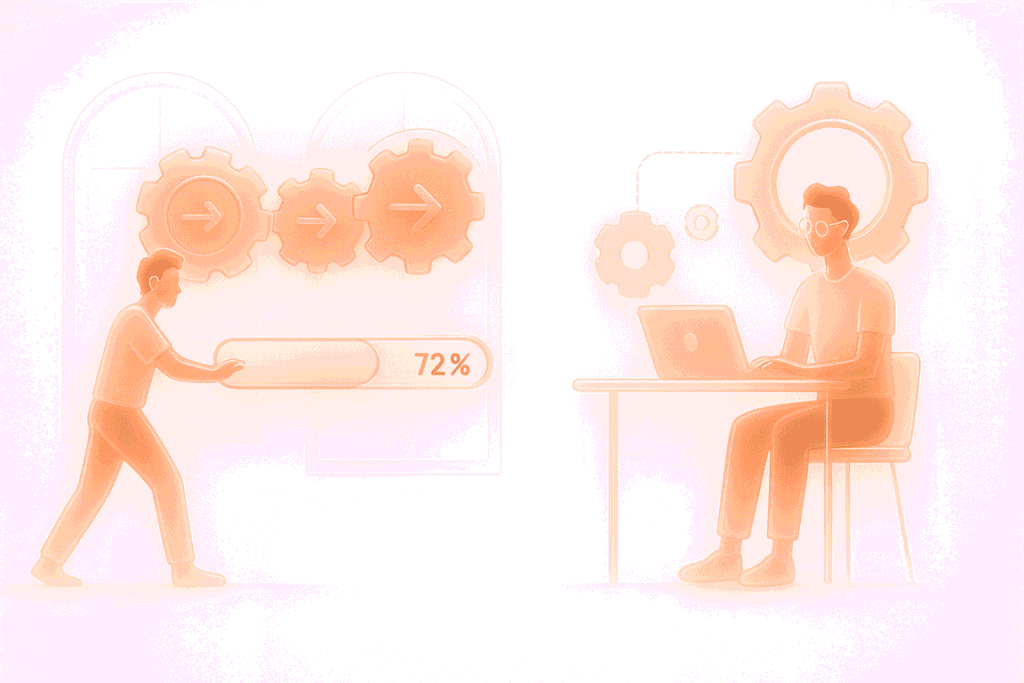
Thriving in the fierce digital space is what every business strives for. While high-traffic events like targeted marketing campaigns, paid ads, product launches, and seasonal spikes certainly help win over customers and skyrocket sales, they also abruptly expose hidden website vulnerabilities to users. To assess website readiness for traffic surges and prevent weaknesses, such as […]
How Website Performance Impacts E-Commerce Sales and Cart Abandonment

Every e-commerce store has mere milliseconds to make the right impression on shoppers. When prospects land on a product page, they assess every single metric, and e-commerce website performance and speed are the most critical ones. In most scenarios, impatient users will bounce instantly — at the slightest hint of latency caused by high loads […]
10 Signs Your Website Can’t Handle Traffic Spikes: Everything you need to know

Your campaign goes live, clicks start pouring in, and traffic shoots up fast. It’s the moment you’ve been waiting for, until everything slows down. Pages take ages to load, checkout freezes, and visitors disappear before they can buy. It’s a frustrating twist: the success of your marketing draws in more people than your website can […]
Why Averages Lie: Mathematical Methods for Load Testing

Relying on “average” metrics alone makes load testing surprisingly inaccurate. In this article, we’ll show how to avoid the usual traps and walk through practical techniques for mathematically modelling a workload profile, from analyzing variance and correlations to spotting Simpson’s paradox and validating the final model. When a company moves to a new system, the […]
Be the first one to know
We’ll send you a monthly e-mail with all the useful insights that we will have found and analyzed
People love to read
Explore the most popular articles we’ve written so far
- Top 10 Load Testing Tools for 2025: The Deep Dive Sep 9, 2025
- Cloud-based Testing: Key Benefits, Features & Types Dec 5, 2024
- Benefits of Performance Testing for Businesses Sep 4, 2024
- Android vs iOS App Performance Testing: What’s the Difference? Dec 9, 2022
- How to Save Money on Performance Testing? Dec 5, 2022
